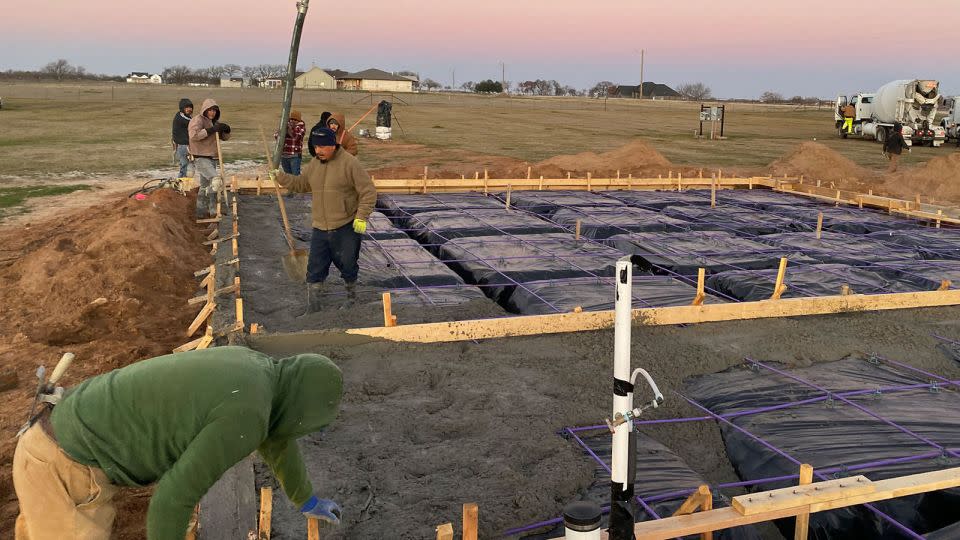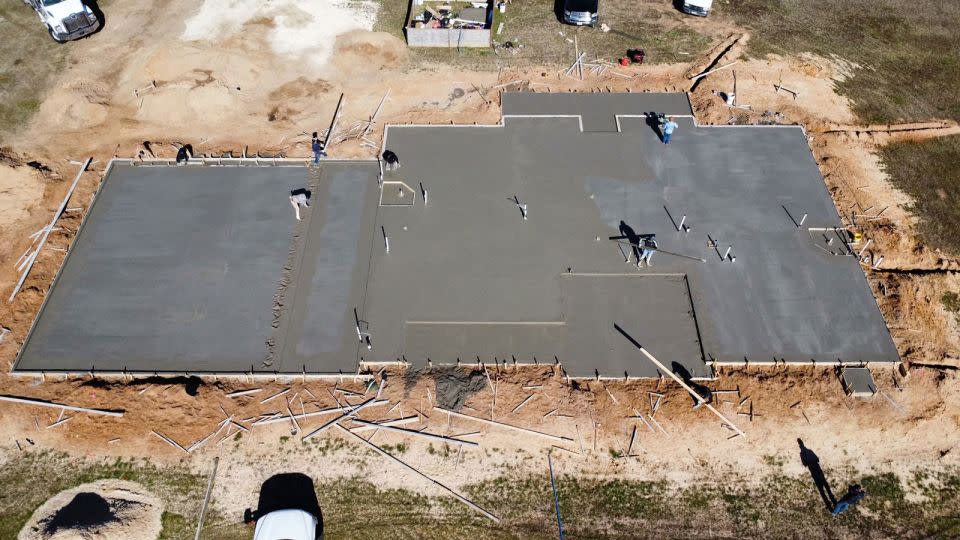These businesses say they can’t keep up with consumer demand without immigrant workers. Americans just don’t want the jobs
Eddie Martin can’t build as many homes as he’d like in Texas because his contractors don’t have enough workers, particularly skilled tradespeople such as electricians, carpenters and plumbers.
This labor shortage, exacerbated by an aging workforce and growing number of retirements, means it’s more crucial than ever for the US to allow more legal immigrants into the country to bolster the ranks of the construction industry, said Martin, CEO of Tilson Custom Home Builders in Austin.
“We’re losing business. There’s no doubt,” said Martin, whose wife’s family started the company in 1932. “So many of those skilled workers are aging out. There’s nobody replacing them.”

Martin works with 300 contractors to build homes for teachers, police officers, firefighters and others in the middle class, with 500 units currently in the pipeline. But he now has to tell would-be clients that it will likely take 14 months to complete the job, instead of nine months, which prompts some of them to walk away. If the contractors could boost their workforces by a third, Tilson says he could probably build another 175 homes a year.
Martin, along with many others in the residential and commercial construction industries, have been pushing Congress for years to create a new work visa program or expand existing ones, such as the H-2B program, to enable them to hire more immigrants. Some would also like to accelerate work authorizations of asylum seekers so they can start training sooner instead of having to wait 180 days, as required by federal law.
The need is growing as the demand for housing increases and as federal infrastructure funding is injected into communities across the country — at a time when fewer young Americans are choosing construction as a career. President Joe Biden has recently pushed several initiatives to lower housing costs and increase supply, including at a campaign stop in Nevada on Tuesday.
But the toxic politics surrounding the border is currently seizing up the passage of new immigration legislation in Congress, quashing any hope of allowing more documented immigrants to build homes, apartment buildings, retail developments and infrastructure projects anytime soon.
“Our issues most likely won’t be addressed until the situation at the southern border is addressed,” said Jim Young, senior director of congressional relations for the Associated General Contractors of America, which advocates for the commercial and multifamily construction industry.
Still, the industry isn’t giving up on making a plea to Congress. The contractor group is running its first-ever digital ads in certain congressional districts this year about the need for more legal immigrant workers for the construction industry, as well as for additional funding for technical education and training.
Labor shortage a top concern
The high cost and lack of availability of labor were among the top challenges for homebuilders last year and are expected to be top priorities again this year, according to a January survey for the NAHB/Wells Fargo Housing Market Index. Some 73% of builders said these were a problem in 2023 and roughly the same share feel they will continue to be an issue this year. High interest rates and potential buyers waiting for declining rates or prices are among the other top homebuilder concerns for 2024.
There were 413,000 construction job openings in January, near the record 454,000 vacancies in November, according to the Bureau of Labor Statistics. But the industry needs to bring on more than 700,000 new workers a year because so many people are leaving field, mainly due to retirements, said Robert Dietz, chief economist at the National Association of Home Builders.
More than one in five construction workers were age 55 or older in 2021, according to an NAHB analysis of Census data.

The share of immigrants in construction has only recently started to rebound after years of fewer immigrants joining the industry due to Covid-19 pandemic restrictions on travel and border crossings and the Trump administration’s clampdown on immigration. Nearly a quarter of construction workers in 2022 were foreign-born, a historic high, according to NAHB, citing US Census data.
But more immigrant workers are needed since the American-born workforce isn’t filling the gap. The trade groups for the homebuilders and general contractors have been working with schools, colleges and the federal Job Corps program to develop the next generation of American construction workers. But progress has been slow. The industry says many kids are pushed by parents and educators, who don’t view construction as a good career option, to go to college.
“We’ve done surveys of young adults and asked them about industries that they want to pursue careers in,” Dietz said. “Construction particularly doesn’t fare very well.”
Limited legal work pathways
The main visa that construction companies can use to bring in immigrant labor is the H-2B visa, which is for temporary or seasonal workers. But many in the industry say the H-2B program doesn’t work well because of the strict cap on and steep competition for the number of visas available, as well as the year-round operations of many construction firms. For fiscal year 2024, there are about 131,000 H-2B visas available.
While they support expanding the number of H-2B visas issued, construction trade groups have also pushed for a new visa for industries that need temporary workers with some skills, but not a college degree. The number of visas issued would vary somewhat with demand from construction firms.
Though bills to create such a visa have been introduced in Congress — such as Pennsylvania Republican Rep. Lloyd Smucker’s proposal last year to set up an H-2C program — they haven’t gotten far.
Expanding the visa system or accelerating work authorizations would also allow the industry to hire more asylum seekers crossing the US-Mexico border, many of whom now work illegally in construction, landscaping and other fields, said Michael Clemens, economics professor at George Mason University.
Meanwhile, demand for more homes, commercial development and infrastructure projects is expected to grow. Overall, NAHB estimates the nation needs an additional 1.5 million housing units, while other projections are even higher. And non-residential development will continue to flourish, aided by federal funding from the American Rescue Plan Act and the bipartisan Infrastructure Investment and Jobs Act.
“We have firms who are telling us that they are not bidding for projects – infrastructure projects, economic development projects, you name it – because they don’t have enough people to do the work,” said Brian Turmail, vice president of public affairs & strategic initiatives at the Associated General Contractors of America.
Shane Wegner’s Midlands Contracting is one of those firms. He has had to turn down work because he can’t find the additional 10 employees he’d like to hire to build sewer, water and storm sewer projects in Nebraska, Kansas and elsewhere in the Midwest, despite constantly advertising on websites, social media and hiring platforms, as well as offering referral bonuses.

He has to compete with manufacturers and meatpackers for local workers, despite his and his peers’ efforts to increase students’ interest in construction. And a few years ago, he applied to get workers through the H-2B program, which cost him close to $10,000, but he was not selected.
“The reality is the biggest fix to this is us being able to hire immigrants,” said Wegner, vice president at Midlands, which was started by his father, Dallas, in 1977. “We’re getting all this infrastructure money, but I don’t have the people to do it … We’d love to get all this work done as fast as we can, but we just can’t unless we can get more legal immigration.”
For more CNN news and newsletters create an account at CNN.com
